A really deep dive into the subject
Adversary Drones Are Spying On The U.S. And The Pentagon Acts Like They’re UFOs.
We may not know the identities of all the mysterious craft that American military personnel and others have been seeing in the skies as of late, but I have seen more than enough to tell you that it is clear that a very terrestrial adversary is toying with us in our own backyard using relatively simple technologies—drones and balloons—and making off with what could be the biggest intelligence haul of a generation. While that may disappoint some who hope the origins of all these events are far more exotic in nature, the strategic implications of these bold operations, which have been happening for years, undeterred, are absolutely massive.
A big pill to swallow
Yes, I realize that the idea that an adversary is penetrating U.S. military training areas unmolested, and has been for years, using lowly drone technology and balloons, is a big pill to swallow, but as one of the people who have repeatedly warned about the threat posed by lower-end drones for a decade—warnings that largely were dismissed by the Pentagon until drones made or altered in ramshackle ISIS workshops in a war zone were literally raining down bomblets on U.S. and allied forces in Iraq—it isn’t really surprising at all. Nor is the fact that the Defense Department is still playing catch-up when it comes to the realities surrounding the drone threat, and not just to its forces abroad, but also to the homeland overall. The utter lack of vision and early robust interest in regards to this emerging threat will go down as one of the Pentagon’s biggest strategic missteps of our time.
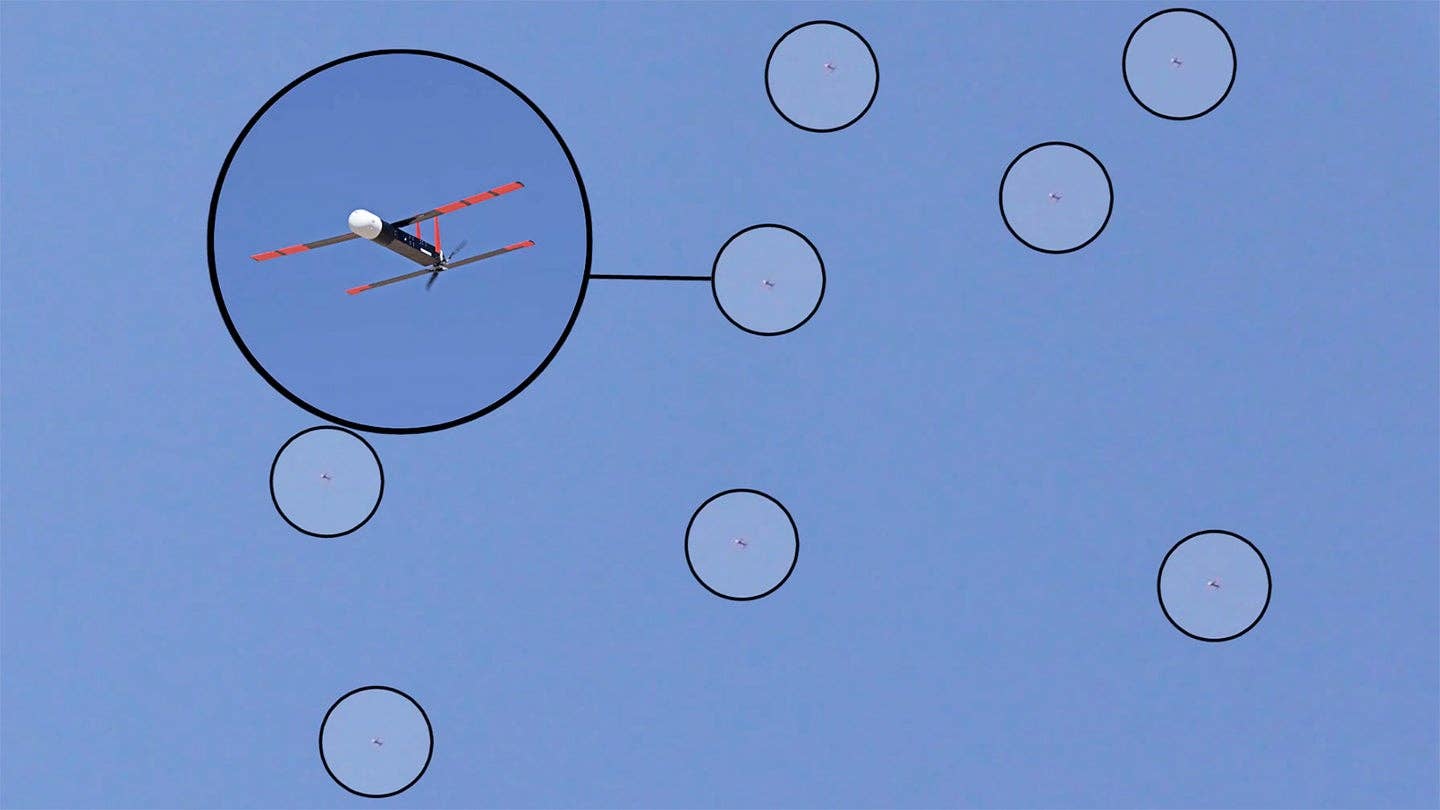
After years of not taking the threat from drones seriously, the Pentagon is trying to play catch up, including weaponizing swarm technology for their own uses across the services. Here is a screengrab from swarming test of Coyote drones., USN Screencap
The gross inaction and the stigma surrounding unexplained aerial phenomena as a whole has led to what appears to be the paralyzation of the systems designed to protect us and our most critical military technologies, pointing to a massive failure in U.S. military intelligence. This is a blind spot we ourselves literally created out of cultural taboos and a military-industrial complex that is ill-suited to foresee and counter a lower-end threat that is very hard to defend against.
And that brings us to one of the biggest problems with this topic, as a whole—people expect one blanket and grand explanation for the entire UFO mystery to one day emerge. This is flawed thinking at its core. This issue is clearly one with multiple explanations due to the wide range of events that have occurred under a huge number of circumstances. This thinking must be changed as it limits our ability to solve some mysteries in the hopes of coming up with some fantastical monolithic explanation for every related mystery. So, accepting that there is likely a wide array of explanations to this notoriously abused topic will be absolutely key to successfully studying it and destigmatizing it in our culture, and especially within U.S. military and intelligence circles.
With that in mind, I also believe America’s prevailing cultural issues and the general stigma surrounding UFOs was successfully targeted and leveraged by our adversaries, which helped these activities to persist far longer than they should have. In fact, I believe that those in power who snicker about credible reports of strange objects in the sky and stymie research into them, including access to classified data, have become a threat to national security themselves. Their lack of imagination, curiosity, and creativity appears to have built a near-perfect vacuum that our enemies could exploit and likely have exploited to an astonishing degree.
A very enticing target
Nearly two years ago, I wrote a widely circulated piece that addressed my thoughts on the Pentagon’s sudden willingness to talk about UFOs and its potential implications. I went through the possibilities as I saw them, but above all else, it was clear that this wasn’t some over-hyped myth. Something strange was indeed going on.

Harry S. Truman Carrier Strike Group., USN
We then got clarification from pilot witnesses on key claims about what they and their squadron mates had experienced before pursuing what was an inconvenient hypothesis for many—that at least some of what these aircrews and vessels were encountering were not an exotic unexplained phenomenon at all, but were in fact adversary drones and lighter-than-air platforms (balloons) meant to stimulate America’s most capable air defense systems and collect extremely high-quality electronic intelligence data on them. And this is critical data, incidentally, that is very hard to reliably obtain otherwise.
We are talking about everything from common operating frequencies to highly-sensitive low-probability of intercept emissions tactics, to datalink encryption, to distinct radar modes and employment procedures here. In other words, this is among the most critical intelligence a peer-state enemy can obtain and there aren’t many easy ways of doing it. Even in a war zone, where aircraft and their systems are operating potentially in the same general area as adversary intelligence-collection systems, using their full combat capabilities may be restricted to maintain the secrets of those critical capabilities. Proximity to the emitters in question and how long their emissions are exposed to an intelligence-gathering system is a major limitation, as well. Traditional espionage is another way adversaries look to gain information on these critical systems, as well, but nothing beats going out and actually sucking up the electronic signatures as best you can. Actually becoming the target of their interest takes the quality of intelligence collected to a whole other level.
Historic precedent
The beginning of making the case for drones and balloons being the culprit for much of the recent UAP activity came when we posted an entire historical precedent for very similar operations dating back to the development of the A-12 Oxcart spy plane and the advent of modern electronic warfare itself. In essence, during the early 1960s, the CIA launched radar reflectors on balloons off Cuba’s coastline via a U.S. Navy submarine and employed an electronic warfare system called PALLADIUM that would trick the latest Soviet radar systems into showing their operators that enemy aircraft were rushing toward Cuban shores or doing all types of crazy maneuvers. This coaxed the Cuban air defense system and its radars to light up and spurred rapid communications between air defenders on the island.
The balloon-borne radar reflectors of different sizes also showed up on the Soviet radars, and by monitoring the targets that the radar operators concentrated on, and thus could detect, it was determined how sensitive their Soviet radar systems actually were. This provided critical information on the survivability of the Mach 3+ and somewhat stealthy A-12, but beyond that, it set a precedent of how electronic warfare and airborne targets could be used to prod an enemy’s air defenses so that critical intelligence as to their capabilities could be determined—all without actually putting a pilot in the air at risk.
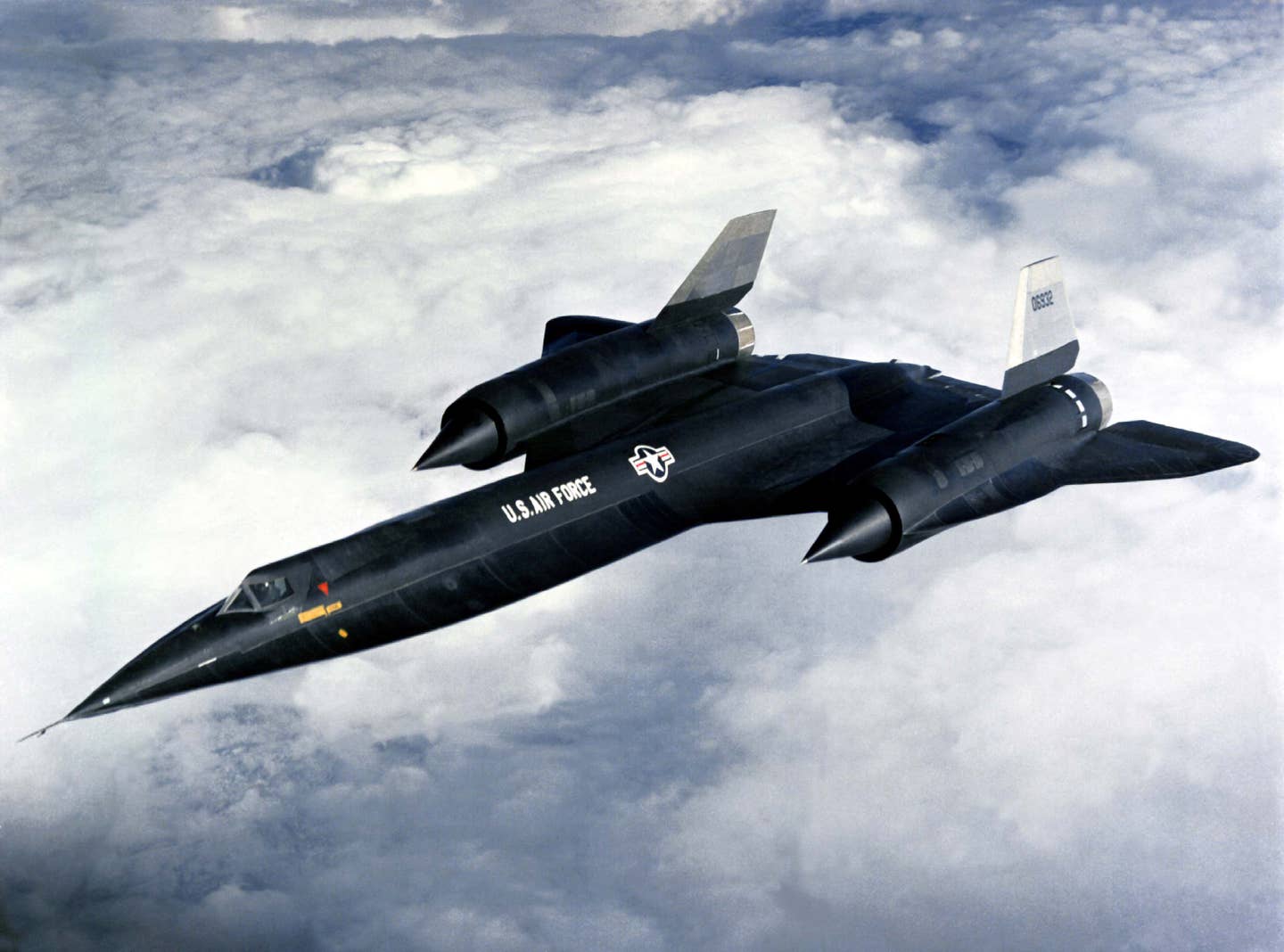
A-12 Oxcart, the Skunk Works’ predecessor to the SR-71., USAF
That was just the start of these types of operations. As the decades went by, far more complex and capable integrated air defenses began proliferating throughout the globe, placing a greater need on collecting this type of critical information. From what we understand, PALLADIUM evolved and subsequently spiraled into a far wider electronic intelligence gathering ecosystem, much of which is still highly secretive in nature and exists to this day.
The U.S. has extremely capable standoff electronic intelligence-gathering aircraft, such as the U.S. Air Force’s manned RC-135 Combat Sent and Rivet Joint, as well as the Navy’s EP-3E Aries and P-8A Poseidon, not to mention U-2S Dragon Lady and unmanned RQ-4 Global Hawk, that are all capable of building up a picture of the enemy’s electronic order of battle from a distance. Even America’s top fighter aircraft are increasingly equipped with digital electronic warfare suites including highly advanced electronic support measures (ESM) that can provide tactical electronic intelligence of very high quality. Other countries, such as Russia and China, possess electronic intelligence (ELINT) gathering aircraft types, as well, albeit without the same level of capabilities or, in some cases, the same international reach and persistence.
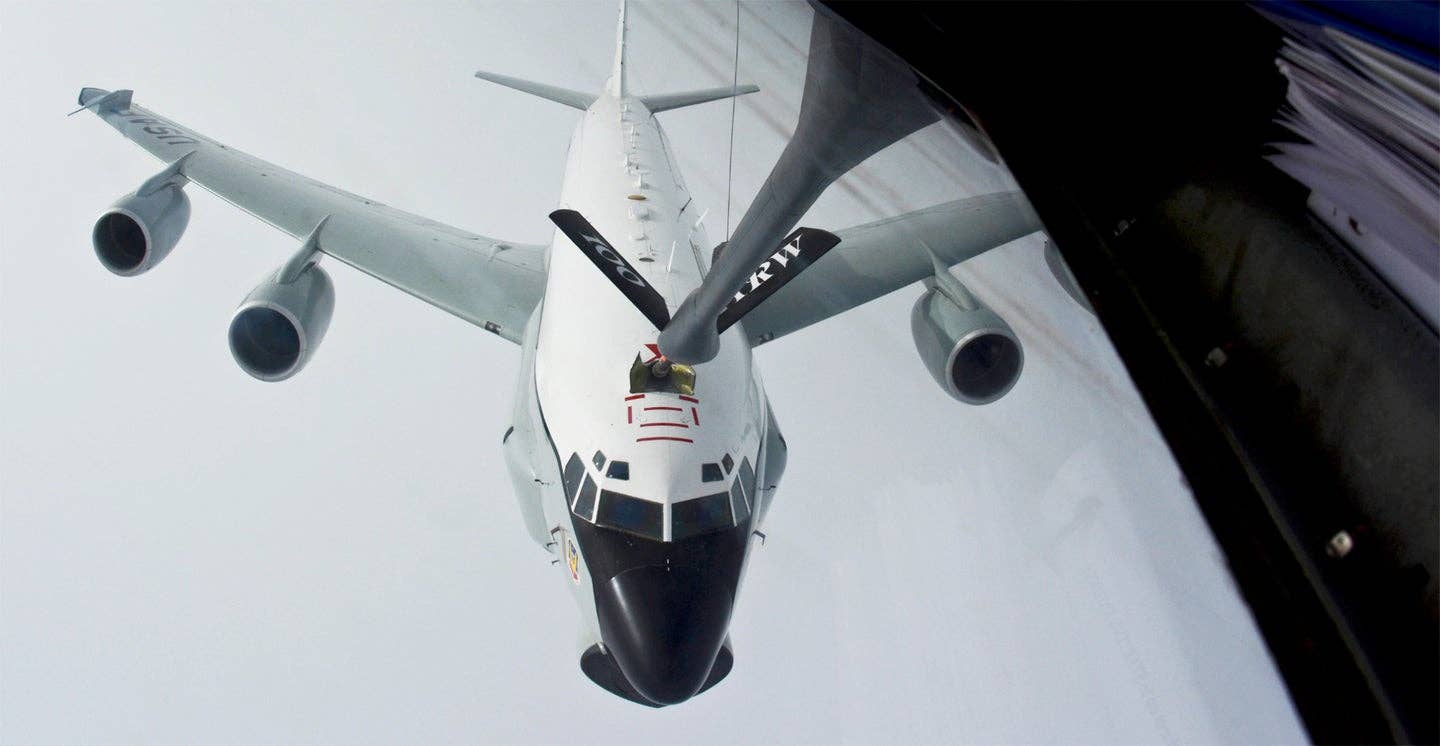
The RC-135U is especially well equipped to build up a regional electronic order of battle on a potential adversary, but it can only do so outside of said adversary’s sovereign airspace. Still, they have been known to make runs toward those boundaries in the hope of stimulating the air defense network they are trying to surveil. , USAF
While the United States also has very advanced, stealthy assets that can penetrate into enemy airspace to collect electronic intelligence data of a totally different fidelity, right near the emitters themselves and over long periods, America’s adversaries do not, at least not yet. They have also historically lagged behind the U.S. government in space-based ELINT systems, which offer another way to scoop up emissions coming out of denied areas, and do so discreetly. This leaves America’s potential foes to have to get more creative in order to obtain this critical information.
So, for the time being, even though exquisite stealth unmanned aircraft may be out of their reach, swarms of lower-end drones and other less-advanced unmanned airborne platforms certainly are not. And regardless of America’s own stealth capabilities, one would be remiss if they were to believe that clandestine operations, such as the one using PALLADIUM 60 years ago, aren’t still going on today. In fact, we know the use of balloons strapped with payloads to collect vital intelligence continued throughout the Cold War.
Preconceived notions
In our investigative pieces on PALLADIUM, we also detailed how radar reflector balloons can be made in many configurations and we even discovered a patent dating back to well before PALLADIUM for a radar reflector balloon that is an exact visual match for the initially totally bizarre-sounding “cube inside a sphere” objects that Navy pilots had reported seeing off the east coast. We also discovered that initial reports that pilots visually saw these craft moving erratically were incorrect. In fact, when physically encountered, they were floating in the air and acting exactly as balloons would.
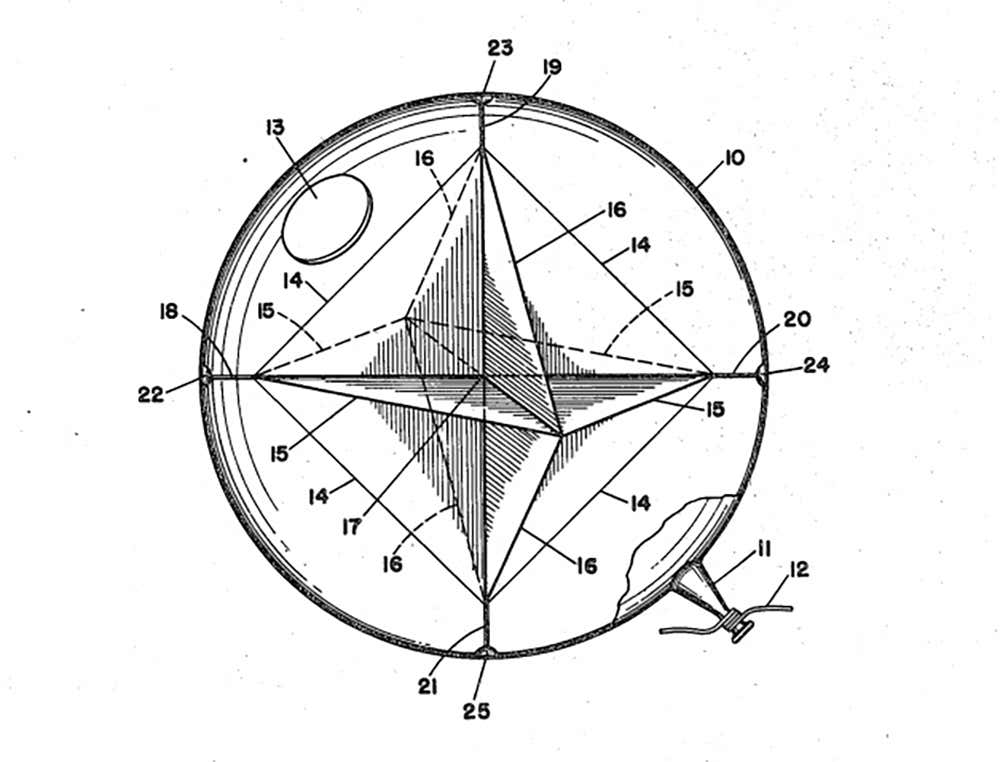
Airborne radar reflector patent dating back to 1945 that matches exactly what pilots described to have seen off the east coast in the middle of the last decade. , USPTO
While balloons can look like virtually anything, drones can also look very strange due to the huge amount of configurations that exist. When most people think of drones they picture a small fixed-wing airplane or quadcopter type setup. That may be true for the heart of the burgeoning civilian market, but there are far more configurations, some of which look downright alien and perform unlike a traditional fixed-wing aircraft or quadcopter. These include everything from triangle-shaped flying wings to hybrid rotor/fixed-wing aircraft or even a vertical tube with a rotor at each end. There are even drones that launch smaller parasite drones and act as their mothership.

The U.S. Navy’s Nomad drone, an electronic warfare payload-carrying system, looks totally bizarre and would have flight characteristics that would appear very strange to someone who had no idea it exists. , USN
Drones can also be networked together and fly in formation. They may not all look the same, either. For instance, smaller drones may be accompanied by a larger drone that carries computing hardware and communications gear, such as a basic satcom terminal or line-of-sight data-link, working as the command and control and communications router for the swarm. Or they may not have any man-in-the-loop communications at all, instead, they can be programmed to fly a pre-planned course or be equipped with programming for them to seek out certain stimuli in their environment, such as particular radar emissions, and to fly certain preplanned programs near those emitters. In fact, some of the biggest leaps in lower-drone technology came from Israel decades ago when they developed drone systems suited for seeking radar emitters and confusing or destroying them.

When it comes to drone configurations, there are a huge number of them being operated or developed around the globe by nefarious actors. The delta-wing design is among the most popular for lower-end militarized drones as it provides high efficiency for long range, a wide operational envelope, and has good stability. It also has a perfect area to install a radiation seeker, optical sensor, electronic warfare payload, or a warhead. , Saudi MOD
These are just some general parameters that are the actual reality when it comes to unmanned systems, and they differ drastically from the assumptions most people make about smaller drones in general. I often hear “oh they can’t fly that way” or “they can’t fly that long, the battery would run out” or “they couldn’t be jammed so there is no way they are drones.” These statements are blatantly wrong, not just when it comes to the capabilities of a peer competitor, but even a less capable country or even a non-state actor.
The swarm is not science fiction
When it comes to the U.S. Navy, it is using swarms of lower-end networked drones, submarines, ships, unmanned underwater vehicles, and more, to convince the enemy to think they are seeing ghost fleets and aerial armadas that aren’t really there. You don’t have to take our word for it, the Navy has a program of record for just this—that being Netted Emulation of Multi-Element Signature against Integrated Sensors, or NEMESIS.
The War Zone was the first to report on this program, which you can read all about here, but, suffice to say, it lays out an architecture that represents a quantum leap in electronic warfare. Yet none of its components are all that exquisite; it’s just the networking of them together and being able to combine their effects cooperatively with highly agile computing and software that is. Swarming drones working together to decoy, jam, and distract the enemy? That is not a high-end capability. Unifying those effects with ships, other aircraft, submarines, and more in real-time to make multiple enemy sensors in disparate locations see the same thing? That is revolutionary.
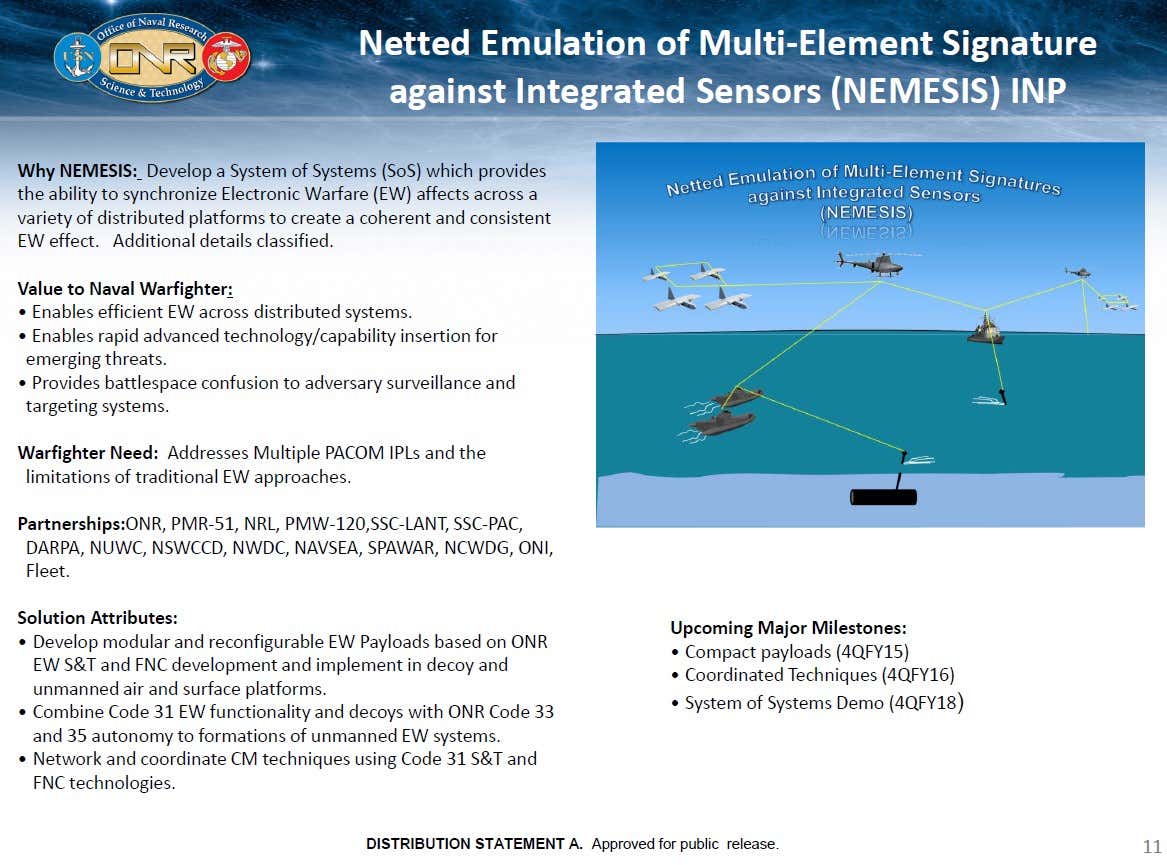
Basic NEMESIS overview. , USN
After we posted the NEMESIS piece, many were asking our opinion if it was what Navy pilots had encountered off America’s eastern seaboard. I am comfortable stating that I don’t believe those incidents were all secret American tests of elements of what could be incorporated into NEMESIS. Quite the contrary, I believe it was largely a foreign power actively using what could be described as some components similar to what could be found in the NEMESIS ecosystem to collect critical intelligence on America’s most advanced sensor systems and more. Once again, this doesn’t mean everything aircrews saw off the east coast during this period were these capabilities, but it seems like a glaringly obvious explanation for most of them, and it is far more so now than it was when we first reported on those incidents.
Months after reporting on NEMESIS, we acquired the Naval Safety Center incident reports spanning most of the 2010s regarding anomalous objects that fighter pilots encountered off the eastern seaboard of the United States. What we found was stunning. While there were only a limited number of reports, and there were very likely other reports never filed with the safety center and instead filed as classified intelligence events, the ones that were there didn’t describe alien craft at all. Instead, they described jet-powered, missile-like drones and other unmanned fixed-wing aircraft flying up in the flight levels, as well as multi-rotor drones hovering at very high altitudes far out to sea. There there are balloon-like objects, the origins of which were all unexplained even after official investigations.
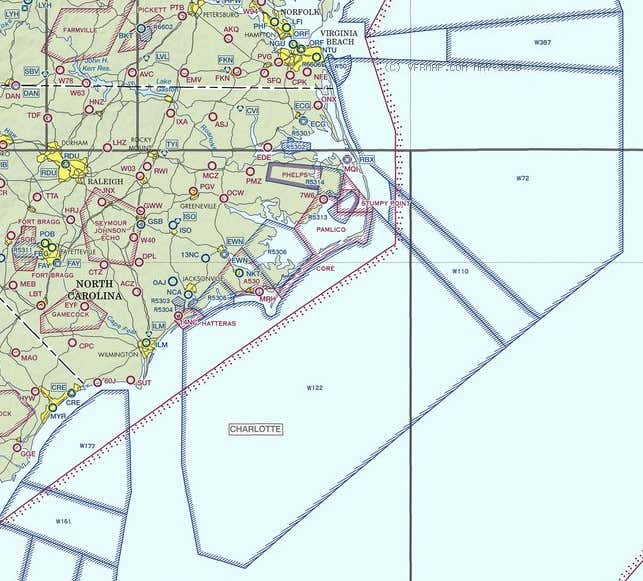
An airspace map showing the W-122 warning area off the coast of North Carolina where some of the incidents in the reports The War Zone received reportedly occurred. W-72, where the bulk of the incidents took place, is visible to the north., VFRmap.com
Certainly no civilian is flying cruise missile-like aircraft at high altitude dozens of miles off the east coast. And flying a multi-rotor drone far out to sea at bizarrely high altitudes isn’t normal. So, who do these belong to? Well if not us, and they are clearly not of an alien origin, then someone else. And who would want to be flying around in these specific chunks of airspace that are literally designated for use by America’s top military aircraft, with the Navy’s most capable warships often operating below? America’s preeminent adversaries—China and Russia—that’s who.
The motive and the opportunity
Those warning areas—airspace that can be set aside for military training—are where America’s most advanced sensors blare their powerful radio-frequency communications and sensor systems day in and day out. F-22s, F-35s, F/A-18E/Fs, F-15Es, E-2Ds, and much more, fill those training areas daily. Below them, Aegis Combat System-equipped cruisers and destroyers, and America’s supercarriers and amphibious assault ships, push their radar and networking systems to the limit to keep their skills sharp and to train for upcoming deployments. We are talking about the most advanced air defense sensor and networking technology on planet earth all operating in one region (the counterpart being off the coast of Southern California) as reliably as the office hours at your local bank.
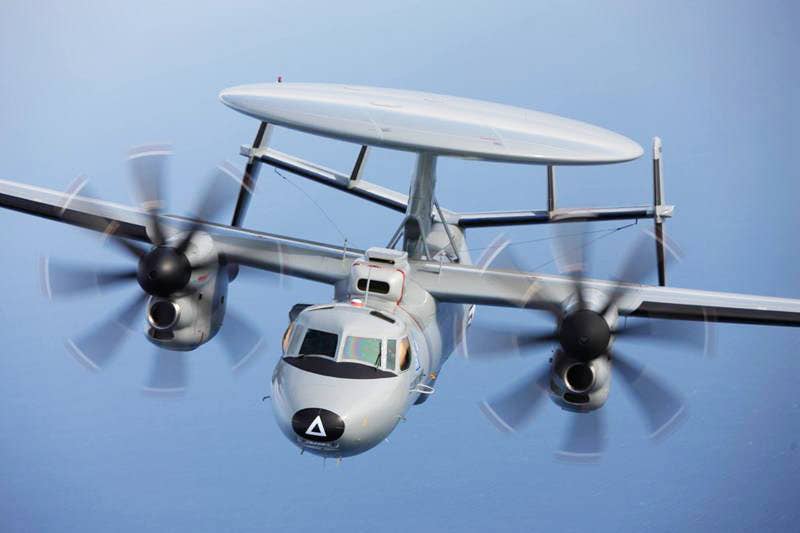
The E-2D Hawkeye represents a quantum leap in capability over its already capable predecessor. Based out of NAS Norfolk, the E-2s are out in these training areas regularly, as well as the fighters., USN
In fact, the Navy fighter pilot who has spoken about recent experiences with the UAP issue the most, Ryan Graves, seemed to have inadvertently summed up what I believe has been going on, and not as a secondary ‘worst case’ possibility as he describes it. Graves stated the following on the Kevin Rose Show:
Once again, it is a hard pill to swallow, but, nevertheless, bingo!
Robots in disguise
As we noted earlier, these drones and the balloons, in particular, could also look very strange to pretty much anyone who encounters them, even like a cube inside a sphere, or a metallic blimp with strange appendages. In fact, the odder they look, the better the cover for ongoing operations. Putting infrared bricks on drones giving them huge IR signatures or making radar reflector balloons look alien in shape would not only confuse the targeted adversary and likely allow for these operations to go on for far longer unchecked than they would otherwise, but they would also massively increase the quality of intelligence data they receive.
With that being said, not only could these things, or other platforms nearby, passively suck up electronic intelligence that presents itself in their vicinity, but the genius of their employment is that they themselves are the targets, and they are not necessarily friend or foe. This makes them flying intelligence ‘honey traps’ in their own regard. They get aircraft and ships to lock them up directly, likely running through multiple radar modes in the process as they get fully interrogated by various platforms, even at close range. This provides otherwise unthinkable opportunities to record all those signatures and tactics, even ones that may not be used otherwise if there was a known intelligence-gathering threat present.
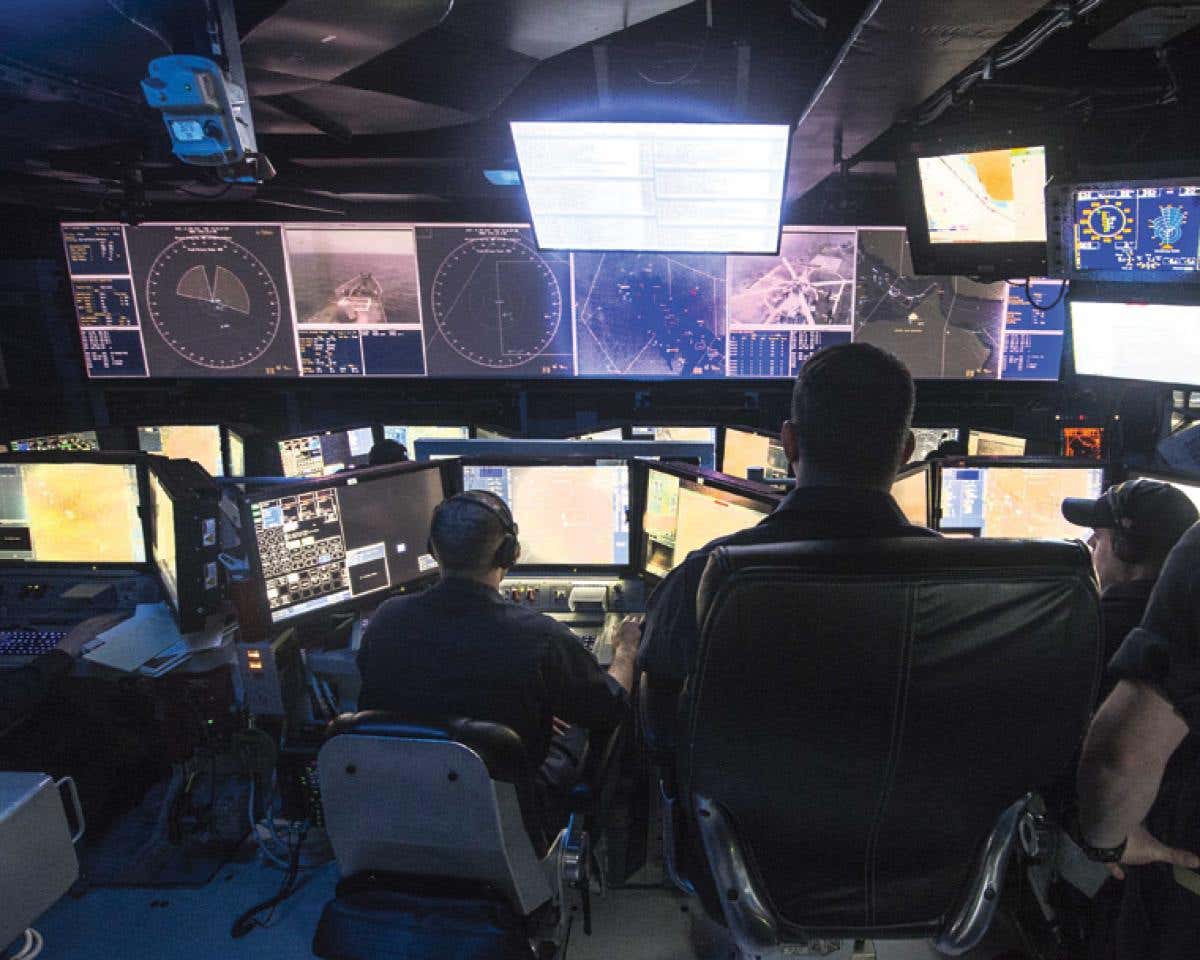
This is a rare photo of the combat information center (CIC) within the Ticonderoga class cruiser USS Normandy where the ship’s diverse set of powerful sensors are brought to bear on targets ranging as far as hundreds of miles from their location., USN
To put it another way, their ambiguous origins and the curiosity surrounding their presence sets up a situation in which they can make radar systems work directly against them without restrictions. Their small radar cross-sections and potentially elusive electronic warfare tactics would push those sensor systems and their operators even harder in order to lock them up, thus giving up even more valuable information.
It’s also worth saying that a campaign like this also has huge information and psychological warfare aspects. Eventually, if it is officially disclosed or outed, it makes the targeted country look horribly impotent in that they couldn’t even defend their own airspace or even define a threat to it. Even more embarrassing, they let hollow cultural stigmas provide an open door to enemy intelligence operations. Beyond that, these activities cause confusion and muddy the waters as to what is a threat and what isn’t. They can also cause fissures between those in uniform who observe these craft and their less than responsive commands. It even fits into Russia’s hybrid warfare playbook, elements of which have been copied by other nefarious actors around the globe, including China.
Clandestine launch platforms
In November 2019, we went on to lay out how submarines can launch their own aerial drones and have been able to so for far longer than most realize. Fast forward to today, and the Navy is now procuring swarms of drones for its submarines. Keep in mind, this is what they openly discuss, imagine the capabilities that have been in place for some time that have never been disclosed. Russia and China, who are looking for every asymmetric advantage against America’s overwhelming technological superiority, certainly had seen the promise that the lowly drone showed for these types of ELINT gathering operations and Russia, in particular, has the submarines to deploy them in the hemisphere in question. Doing so with radar reflector and electronic intelligence gathering payload-carrying balloons is an even lower hanging fruit.
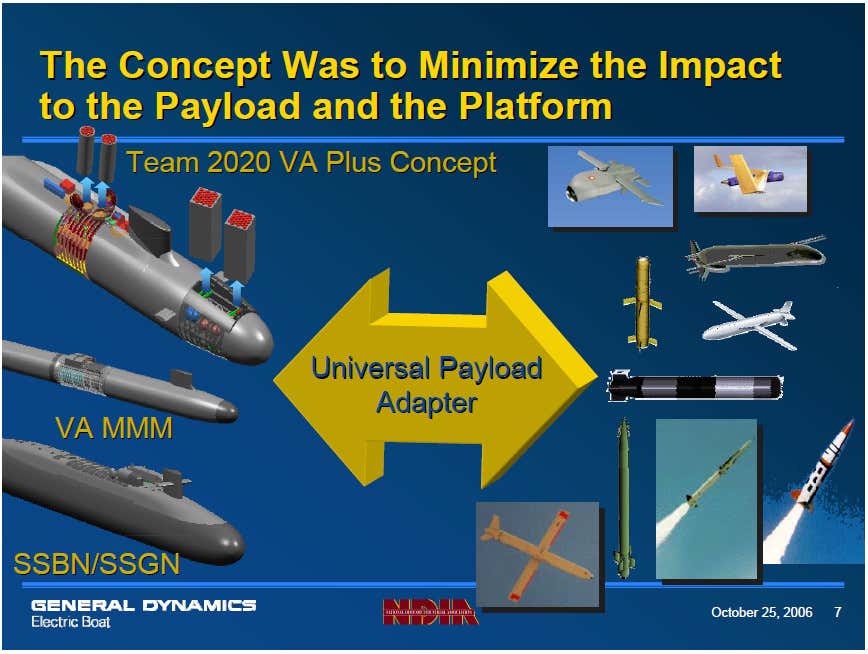
In the mid-2000s, studying and adapting UAV concepts of many sizes for submarine operations was in full swing. America’s adversaries didn’t just sit and watch, either., General Dynamics
Many naysayers have said that this is impossible because there are no Russian submarines deep in the Atlantic and that the U.S. largely controls this massive body of water. We begged to differ on that point and it turned out that the Navy eventually did too. It is now open knowledge that Russian submarines are operating deep in the Atlantic to the point that the Navy is calling it a contested body of water. And if you think the Navy has a perfect track on those boats at all times, you would be sorely mistaken. So, there is a motive and there is a delivery method, but really, we are probably overthinking it, at least to some degree.
An expanding picture of widespread events
Over the past two years, we have also reported on what appears to be an increasing phenomenon of large drone swarms spotted over the United States, as well as its outlying territories, and especially near strategic installations. The Colorado drone swarm saga seemed like something of a bizarre series of events in which the general consensus couldn’t seem to settle on a case of mass hysteria or something actually occurring—this was not helped by really reckless reporting on the issue by one or two major outlets. Our subsequent investigation showed that internal correspondence between federal and local stakeholders pointed to it being anything but some product of mass groupthink.
Then, maybe most chilling, we uncovered that drones had taken a very troubling interest in one of the most important U.S. air defense sites on earth—the Theater High Altitude Area Defense (THAAD) anti-ballistic missile battery on Guam. This is literally the last line of defense against incoming ballistic missiles for America’s most important base in the Western Pacific. It is also the home of an AN/TPY-2 radar, one of the most advanced in the world, that provides surveillance and targeting for the THAAD missile interceptors. It isn’t hard to imagine how valuable electronic intelligence from that radar and the system’s local area and beyond-line-of-sight datalinks would be to an adversary like China, which not only has a huge interest in disabling such a capability during a time of war, but also learning from it to develop its own systems.

The highly advanced AN/TPY-2 radar that helps detect incoming ballistic missiles and guides THAAD interceptors onto their targets., US Army
While some may brush off the actual destructive capabilities of a relatively small drone, they shouldn’t. A drone packing a small charge may not be able to sink a ship or blow up an entire missile site, but it can punch a hole into a radar array and put the entire system out of business for long periods of time. In other words, a mission kill is just as effective at achieving the primary goal of disabling a defensive system as literally blowing it up. And yes, it is ironic that a THAAD battery, one of the most technologically impressive surface-to-air weapon systems ever created, can swat down incoming ballistic missiles but is extremely vulnerable to what could be as simple as a modified hobby drone. Once again, this is in large part a result of the Pentagon’s unwillingness to recognize the threat of low-end drones before it materialized and its chronic under-investment in short-range air defenses (SHORAD) that withered on the vine in the decades following the dissolution of the Soviet Union, a situation which you can read all about here.

USS Kidd, an Arleigh Burke-class destroyer that was at the center of reports of mysterious drone activity off the coast of California in 2019., USN
Swarms of drones harassed a number of U.S. Navy destroyers executing combat drills less than 100 miles off Los Angeles. This occurred on multiple nights. The level of documentation in that article alone shows just how palpable this part of the so-called phenomenon has become. You can imagine just how good the intelligence would have been with those ships’ sensors and communications systems stimulated by the swarm of unknown origins within the perceived safety of America’s own territorial waters. That swarm could have been, and likely was, sucking up, or helping another nearby platform suck up, all that sensitive ELINT data on the most capable warships on earth and at very close range.
Uncompelling ‘UFO’ evidence
Beyond the so-called ‘Tic-Tac’ video that just looked like a blurry little Tic Tac, I have seen nothing in any government ‘UAP’ videos that supposedly show unexplainable capabilities or craft that actually portray that. In fact, quite the opposite. I have stated this repeatedly and tried to explain some of the unique dynamics at play with modern targeting pods and other factors, with many being offended by the mere thought that the videos simply are not what many have portrayed them to be. I have talked directly to the folks that design and build the sensor systems themselves. They don’t see anything either, which I find quite strange considering these videos are supposedly evidence of flying objects that are unexplained.
Of course, we are only shown snippets of each video. There could be more footage that does show more puzzling maneuvers, but that simply isn’t the case at this time. At least when it comes to the ‘Go Fast’ and ‘Gimbal’ videos, while the exact origin of the craft shown may not be known, they certainly are not unexplainable.
The three officially furnished government ‘UAP’ videos:
In recent weeks, more official evidence has come to light. This includes recently released images taken from an F/A-18 cockpit that clearly show balloons, not strange totally unexplainable craft. A video and still images from the incident we reported on that occurred off the California coast in 2019 have also come to light. They seem to show either delta-wing-shaped drones, very similar to the ones we have discussed earlier, or, and far more likely, another type of drone that is obscured by bokeh effect, the result of a bright light source being recorded out of focus through a night-vision scope by another camera. Once again, nothing appears unexplainable here. Quite the opposite, really.
One other leaked set of images, taken by the Littoral Combat Ship USS Omaha around the same period of time, shows what some claim is a ‘trans-medium craft’ disappearing into the ocean. The stills provided prove nothing of the sort. It looks like a balloon or other object hitting the water as seen through a thermal imaging system. Once again, maybe other data exists that is compelling and truly exotic, but this certainly isn’t that.
As for the authenticity of these latest photos and videos, our friend John Greenewald got confirmation that they are indeed authentic from the Office of Secretary of Defense spokesperson on the UAP issue, Susan Gough.
As it sits today, the Navy’s top uniformed officer says the craft involved in the 2019 incidents off of Southern California remain unidentified.
First of all, it’s not the Navy’s job to protect America’s sovereign airspace, it is the Air Force’s. That service will say next to nothing about any of this, even when asked very specific questions. Why? Well, at least when it comes to the drone threat, they really don’t have the ability to defend against it and have clearly failed in doing so thus far. In fact, if unidentified flying craft are hanging out off of our coasts, why haven’t alert fighters scrambled to investigate them repeatedly? Their crews are the ones specially trained and equipped to do so. Maybe they were and we just haven’t heard about it, but if it was happening all the time, I find that doubtful. And yes, they do scramble on ‘UFOs,’ as we exclusively discovered a few years ago.
The other possibility is that we are doing the same exact thing, using drones and balloons to gather critical information on enemy air defense capabilities overseas, and thus, we really don’t want to delve too deeply into the matter. In fact, we may want it to seem like we are totally stumped by these activities too.
Sound familiar?
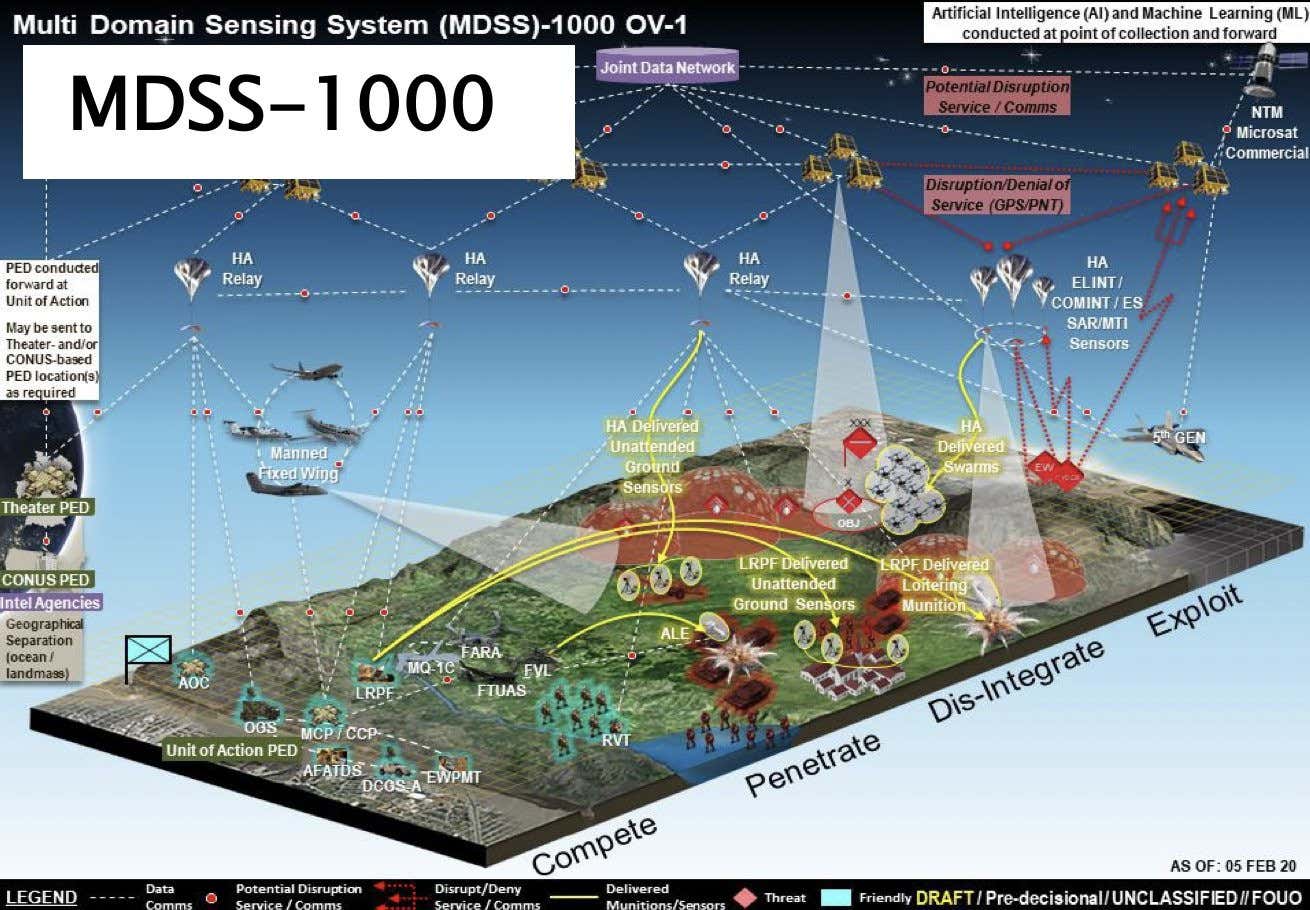
US Army
These are just possibilities, but considering the intelligence value up for grabs here, and how hard it can be to obtain that intelligence, they are at least worth pondering and it is really quite possible that a mix of these scenarios could be at play.
An investigation in a bubble
It also seems quite possible, that when it comes to the Pentagon’s investigations into these matters, there is a lack of real expertise to properly evaluate the evidence. In all the discussions about this topic and the Pentagon’s ‘UFO’ programs under AAWSAP and later AATIP, it seems that they were working largely external to the sprawling intelligence infrastructure built over 70 years to quantify foreign threats using limited information and even to exploit them.
While claims that ‘smart people’ have looked at the data may be true, we don’t know who these people are or what their level of expertise or resources is. Do they even exist inside the DoD and intelligence community’s analysis world or are they external to it? How many eyes are actually working on these issues and collaborating to better understand and quantify them? From what we understand, historically very few, at least in regards to the programs that have been disclosed.

The full section regarding the UAP reporting requirement from the Senate’s Intelligence Authorization Act for Fiscal Year 2021., U.S. Government
From everything I know about the now famed ‘UAP task force,’ and by others’ accounts as well, it is not some powerful inter-agency initiative with a solid mandate from inside the Pentagon and the intelligence community. Far from it. It is a few people in an office with very limited resources that are often hitting walls when trying to obtain critical information from other intelligence stakeholders.
The primary reason for this being so troubling is not a looming threat from space invaders or inter-dimensional beings, or the dream of some all-telling disclosure to the public, it is because the next big threat that surprises us from a foreign adversary will likely look very unfamiliar, at least at first. As it sits now, the current technological threat analysis ecosystem appears to be broken. The fact that drones and balloons have appeared to fool it for years, or even worse, never got its attention, is damning. But once again, knowing the DoD’s abysmal track record on the drone threat issue, and the stigma in the DoD around ‘UFOs,’ a subject that few want to touch, this really isn’t at all surprising.
An essential revolution
What is critical to national security now is to transform this little struggling UAP task force into a properly-funded and internally mandated ‘unidentified observed capabilities’ fusion and analysis cell that pulls every piece of data the Pentagon and the intel community have to offer to evaluate incidents that involve aspects that don’t immediately make sense. This is not just about what happens in the sky either, but also what happens under the sea, where we know anomalous data is encountered but is seemingly tossed into the ether. The same can be said for any anomalous things that are observed in orbit, especially as space continues to rapidly evolve as tomorrow’s battlefield.
It also has to work both ways. When an incident is observed via a particular sensor system or platform—even those that are highly classified—that data needs to be fed to the fusion cell and it needs to happen under standing orders from the top down. In other words, it can’t be just a ‘grovel for this or that’ after-the-fact scenario, there has to be a mandate to provide this information as soon as possible, not only after it is asked for. Basically, that has us playing with one hand and one leg tied behind our backs.
We have the model, the question is why aren’t we using it?
Nowhere left to hide
The truth of the matter is that, in addition to drone swarms and balloons, if something more exotic is truly out there, it will likely be detected much more frequently in the very near future than it has in the past. In fact, the establishment of the fully supported fusion cell I describe may not end up being a choice due to the changes that are about to occur in sensor technology.
In addition, Navy and Air Force fighters will soon be flying with advanced infrared search and track pods daily, giving them a passive form of long-range detection and yet another sensor to bring to bear on low radar cross-section UAP contacts. You can read about how this technology could have a major impact when it comes to detecting and tracking UAP targets in this past post of ours.
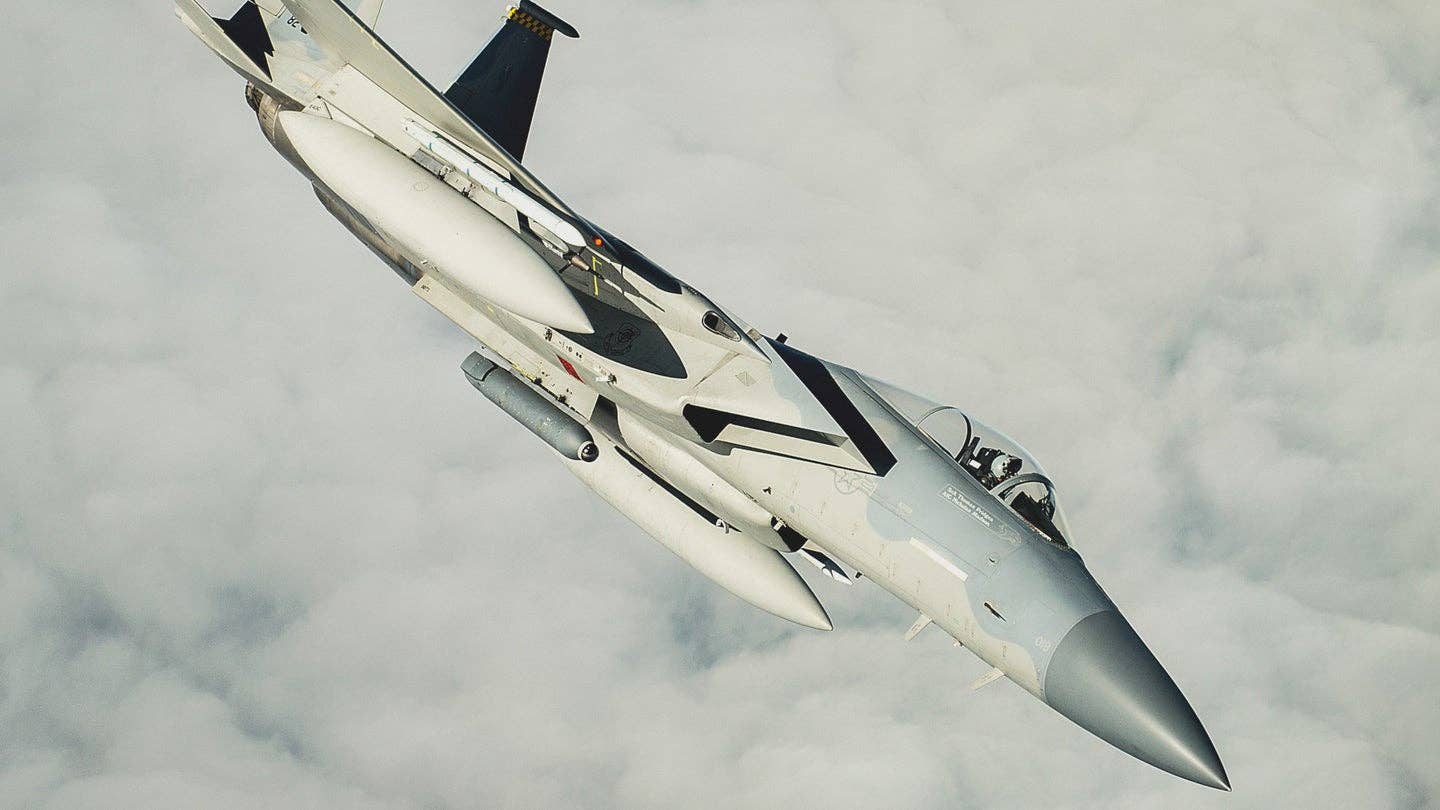
An F-15C equipped with a Legion pod that carries an advanced IRST. , USAF
The Air Force is building out new sensing layers in space, especially ones that can detect and track hypersonic missiles careening through the atmosphere at extreme speeds. These new remote sensing layers will be able to see and track things we’ve never seen or tracked consistently before. The massive Long Range Discrimination Radar in Clear, Alaska, will provide radar data of an unprecedented fidelity over a huge area—it’s literally capable of reliably verifying ballistic missile countermeasures and decoys from reentry vehicles. U.S. Space Force is contracting out an array of telescopes to optically track objects in orbit and to detect suspicious changes in those objects’ activity. On top of all this, new artificial intelligence (AI) enabled software will make automatically detecting and tracking strange targets on all types of sensors easier than ever before.
What has Congress really been told?
The Pentagon’s nonsense in regards to UFOs appears to have actually threatened national security at the highest level—literally leaving the homeland with an open door to be walked through by lowly drones and our most prized military capabilities being allowed to be toyed with for their intelligence value on their home turf. I have stated on numerous occasions that the next 9/11 will come from swarming low-end drones and this situation further underlines just how plausible that is. But we really don’t even need to use our imagination. Just ask Saudi Arabia if that is plausible.
While it is good that the Senate Select Committee On Intelligence has demanded a report on this issue, the question of exactly the quality of analysis that will go into that report is very real. Even recent leaked documents show things being classified as evidence of unexplained UAP, while even based on our own investigation, it seems pretty clear as to their basic classification. Common optical effects, balloons, and even known aircraft shapes seem to have chronically stumped the Pentagon’s UAP investigators.
The absolutely horrific communications job by the Department of Defense on this matter, one they themselves largely dragged back into the spotlight, has made the entire topic even more confusing for people to interpret. This must change in order to instill any form of confidence in the answers the government provides on this issue. There is a long and weird history of the U.S. government, and the Pentagon and intelligence community especially, abusing the UFO topic dating back the better part of a century. The media itself could do a way better job too. The fact that it’s always framed in an “alien” context when news relating to these events hits major outlets is highly detrimental to a very relevant cause.
Plugging the gap
Step one is to admit that we have a major drone problem far closer to home than anyone wants to own up to and that at least one of our adversaries has made a mockery of us and compromised key capabilities using remarkably low-end technology. Simply put, they have won and in an outstandingly ironic and ingenious way. Only once we come to terms with this can move on to solving this problem and confronting who is behind it, although I think it is pretty clear who that could be considering there is a list with really just two names on it.
Step three, totally change the communications strategy around this topic. Provide information on absolutely everything that you can, even if it is inconvenient, while protecting sources and methods where relevant.
As it sits now, we would probably only find out that it actually isn’t once it’s too late.
